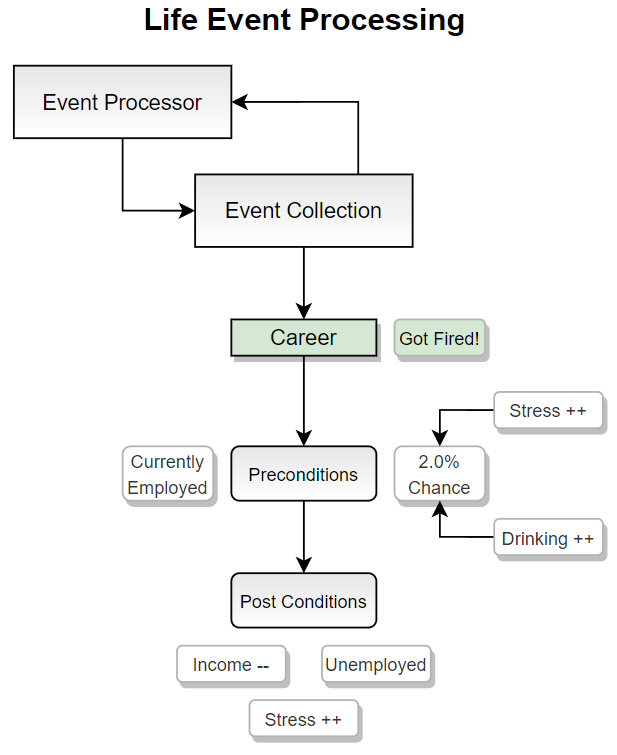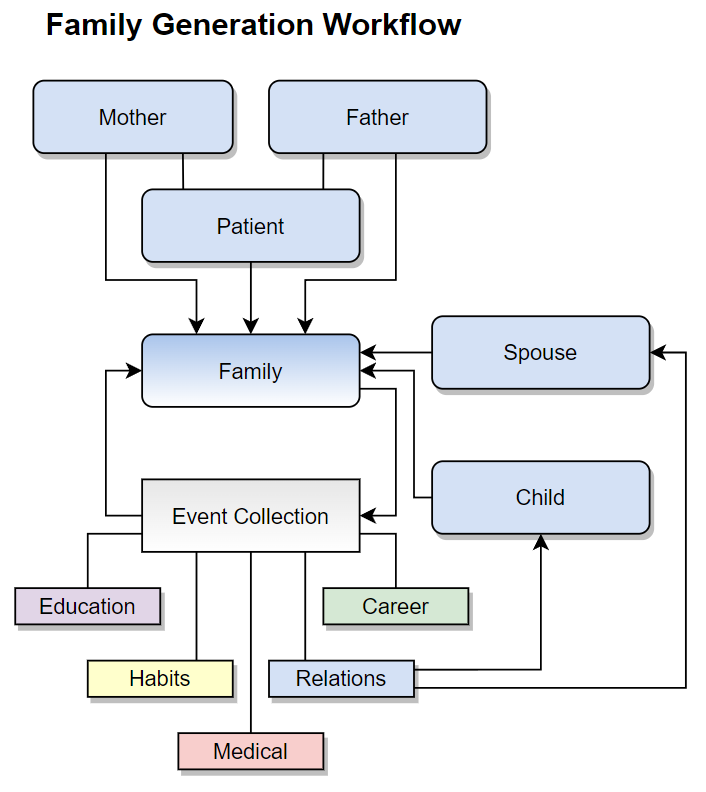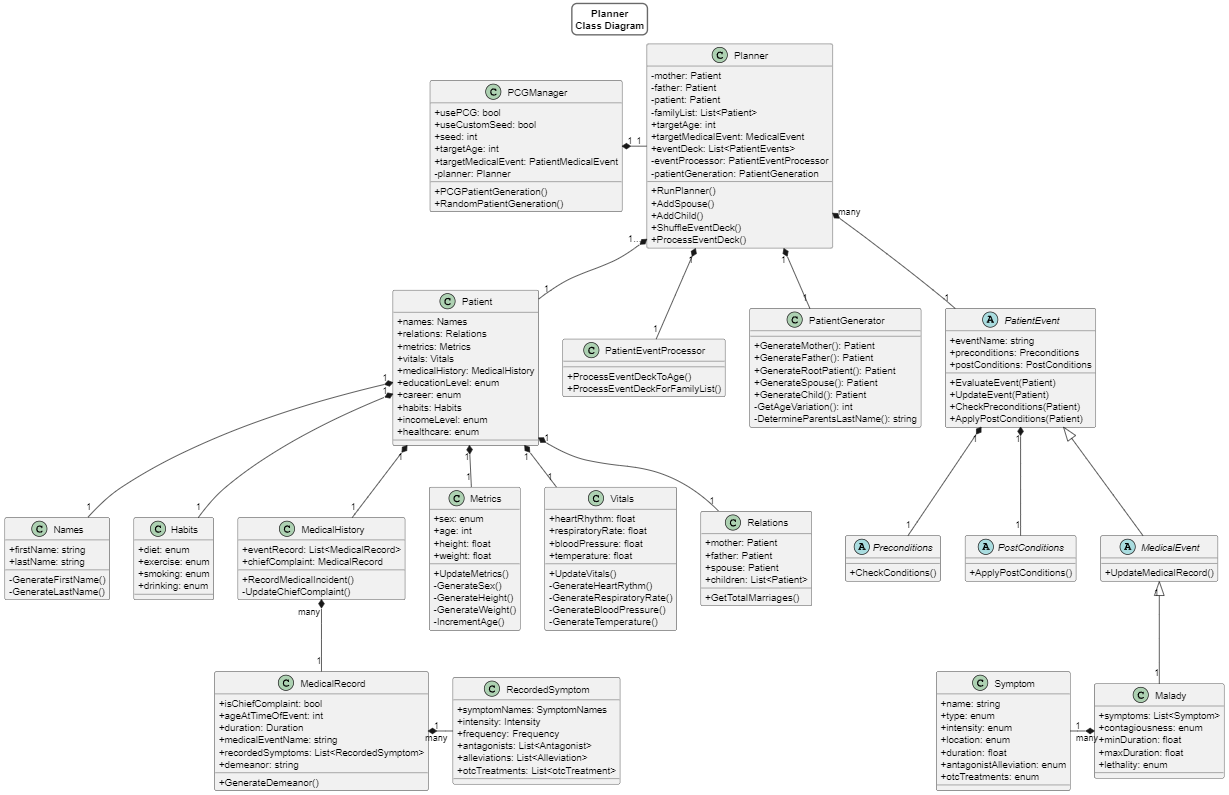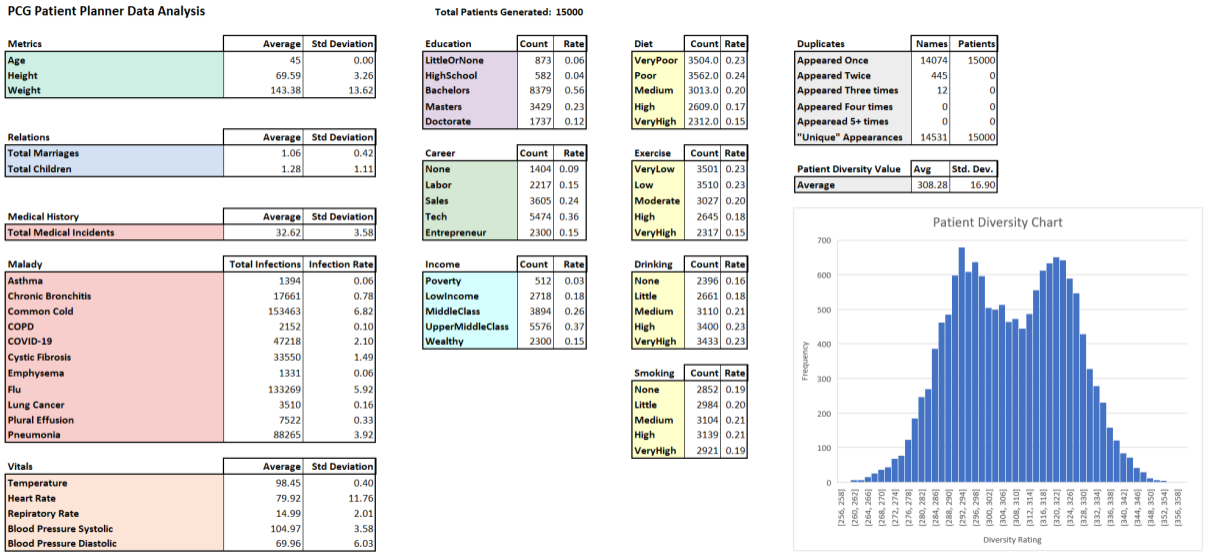This group research project, composed of myself and two other students, was developed to explore how medical diagnosis training
simulation could be improved using procedural generation. As a lead programmer on
this project, I designed and implemented the procedural generation algorithm that
generated patient scenarios, wrote the associated documentation, helped develop the
statistical analysis system, and co-authored the (unpublished) research paper.
Project Purpose
Through our research, we determined that existing medical diagnosis training
simulations had some shortcomings. We found that the best training simulation
available, which involved using specially trained actors, was cost-prohibitive and
inflexible and existing computerized solutions failed to capture the complexity of a
real-life patient scenario.
With this knowledge, we hypothesized that a key weakness of existing computer simulations was
that their patient scenarios were one-dimensional, resulting in testing that mostly focused on memorization.
A real-life patient is more complicated as they have a history consisting of events that can
effect their chances for developing, and resisting, various ailments. For example, factors such as
past illnesses, living conditions, economic standing, education, family relations,
etc. can make a patient more or less likely to experience physical or mental illness.
Taking these factors into consideration when simulating patient scenarios could provide
more meaningful medical training that could facilitate more than just memorization
testing, introducing greater nuance and ambiguity by simulating causality.
Application Development
To test this hypothesis, we developed a medical diagnosis training application in Unity
where a trainee could interview a procedurally generated patient, choose a diagnosis,
and review the accuracy of their decision.




